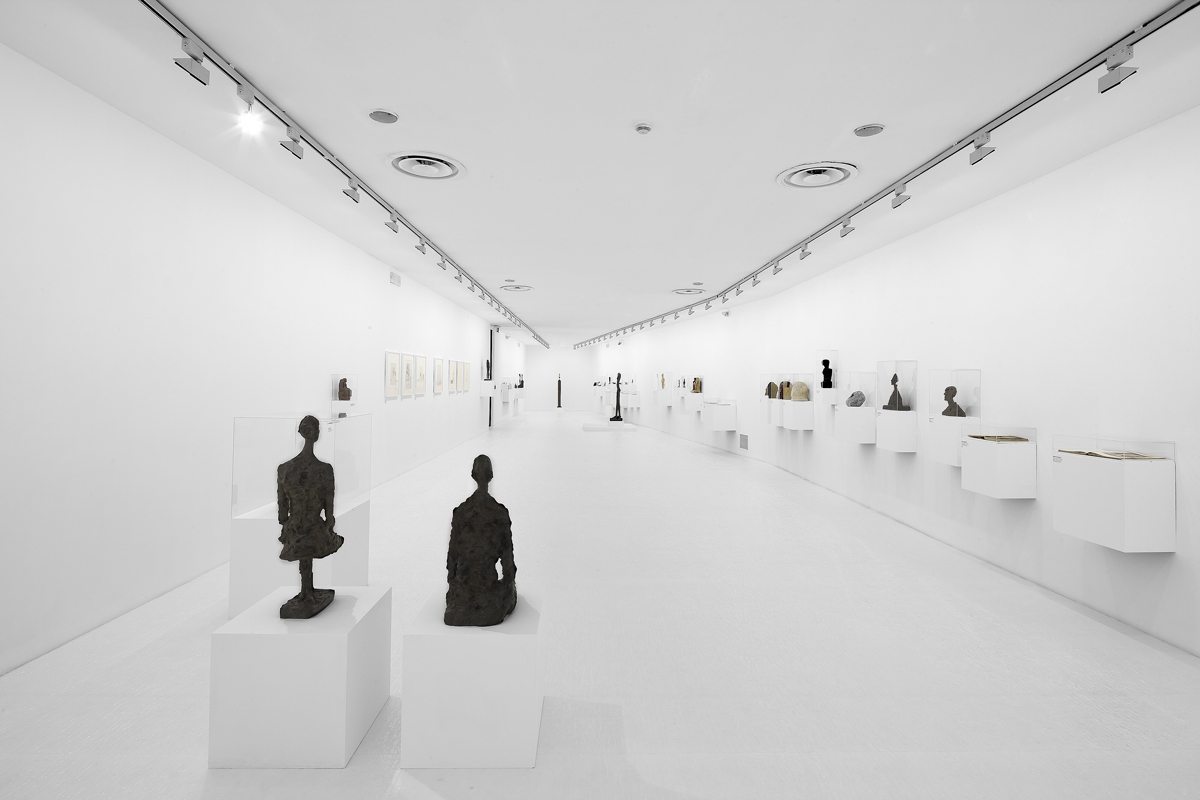Edited by Pietro Bellasi and Chiara Gatti
Rich in around seventy pieces, the exhibition reveals to the public the great fascination that ancient statuary (Egyptian, Etruscan, Greek, Celtic or African) had in the eyes of the twentieth century master famous for his walking figures, the motionless women and silent like idols of the past.
«All the art of the past, of all eras, of all civilizations, appeared before me. Everything was simultaneous, as if space had taken the place of time.” From this intense confession was born the idea of restoring the dimension of eternity to the masterpieces of Alberto Giacometti (1901-1966), bringing a precious selection of finds from some among the most important Italian museums of ancient art.
The loans of Giacometti’s works, granted by important Swiss collections as well as by the Kuntshaus of Zurich and the Peggy Guggenheim Collection of Venice, will be combined for the first time with the archaic works of the National Archaeological Museum of Cagliari, the Civic Archaeological Museum of Bologna, the Civic Museum of Palazzo Farnese in Piacenza and the National Etruscan Museum of Villa Giulia.
Giacometti’s works and those of his ancestors will animate a compelling journey, developed by themes and iconography, based on a game of references, of crossed glances between masterpieces, removed from the dimension of time and relocated in the space of contemporaneity.
From the studies conducted over the years on the points of contact between Giacometti’s work and the statuary of the ancient era – from Egyptian to Sumerian art, from Bronze Age artefacts to Greek art up to African sculpture – it has emerged the possibility of building a map of the iconographies of the past and of the cultures most loved by the artist, taken as a model for his contemporary reflection, aimed at searching for ancestral expressive forms, capable of representing modern man in an eternal vision, in a recovery of our origins and our history.
A fascinating journey through time (and space) will then demonstrate how its Femme qui marche , performed between 1932 and 1936, proposes the same canons of stylization of the body, the frontality, the hieraticity, the short advanced step of the left leg, a pure concept of movement, inspired by Egyptian iconography. In the context of art nègre, the Oko Insignia or the Igala Figures of Nigeria with the flat and elongated belly, are testimonies of images of the spirit, the visible form of an invisible that man carries within himself, and which Giacometti studied to background for his sculptures with small heads and highly elongated busts.
The famous figures of Etruscan origin, such as the Haruspices with the “blade” bodies of the Villa Giulia Museum in Rome, discovered by the artist during his first trip to Italy between 1920 and 1921, seem to ideally return to the motionless forms of the sculptor with which they share linearism, composure and harmony. In the same way, the dialogue with the Nuragic bronzes – which mark a link with the Sardinian territory – can be explained through the words of the art historian Giuseppe Marchiori dedicated precisely to the anthropological flavor of Giacometti’s research and to the shapes of his bodies «slender as Nuragic warriors, without spears and shields, or similar to the Volterran idol, to the men of the night”.
Proceeding by comparison, here are finally some small bronze Kore, with their compact shapes, their arms stretched out along their sides, recalling the delicacy of Giacometti’s most slender works, those figures a few centimeters high, like the image of Silvio debut; while some portraits of Diego or Annette sitting can be compared to those praying in Egyptian culture, to Templar statues or to kneeling mourners, with the classic pose of open hands resting on bent knees.


